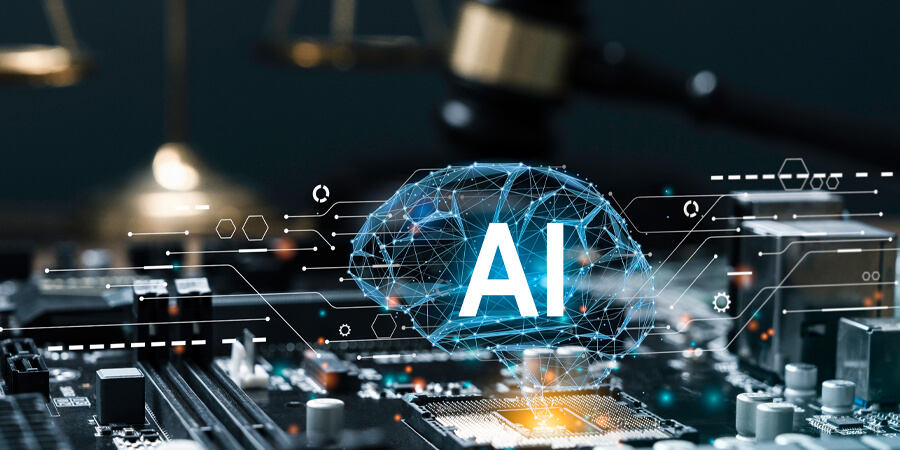As AI systems take charge of an increasing range of decisions and improve in optimizing objectives, the potential for unintended consequences escalates.
Experts fear the emergence of the AI Control Problem that arises from the possibility that AI might surpass human intelligence, making control difficult. The resulting actions could oppose human interests, with more severe consequences as AI sophistication grows. They emphasized that averting AI-related risks should be a global priority, comparable to concerns like pandemics and nuclear war. Hence, there is a widespread notion among private and public sector leaders regarding the urgency of AI regulation.
Monitoring the swift evolution of international conduct codes and interim standards will assist companies in efficiently prioritizing relevant AI standards.
Controlling the Use of AI
A Brookings research highlights two distinct facets of AI control, each demanding unique solutions. The direct control issue addresses the challenge of entities operating AI systems to maintain control, while the social control aspect concerns aligning AI behavior with societal norms.
European Union (EU) policymakers are pioneering comprehensive AI regulation worldwide through the AI Act. This framework classifies risks into three categories: unacceptable, high-risk and non-banned applications. It will shape AI's global development and governance.
In Canada, legislators are working on an AI regulator mirroring the EU's risk-based approach. Their aim is to standardize AI design and development across provinces and territories.
China's Cyberspace Administration introduced draft measures for generative AI use, specifying content alignment with socialist values and non-subversion of state power.
Across the US, over 25 states and territories have introduced AI bills. Some, like Texas and North Dakota, formed advisory groups to study AI's impact on state operations. Massachusetts and New York propose limitations on AI use, particularly in mental health and employment decisions.
The Food and Drug Administration (FDA) also released an action plan for AI-driven medical software (SaMD) to ensure safety and efficacy.
Additionally, leading tech players - Anthropic, Google, Microsoft and OpenAI - established the Frontier Model Forum, focused on responsible AI model development. It will create benchmarks, a public solution library and industry standards.
More importantly, smaller companies must also engage in the regulatory dialogue, as their perspectives influence AI implementation scrutiny.
Rapid Development
A recent poll by Reuters/Ipsos revealed a growing trend in the US workforce: many employees are turning to ChatGPT for routine tasks. Across the globe, companies are exploring ways to integrate ChatGPT into their daily operations, encompassing tasks like drafting emails, summarizing documents and conducting research. However, concerns are emerging from security firms and corporations, warning of potential intellectual property breaches and strategic leaks.
As generative AI gains widespread traction, businesses bear the responsibility of ethical utilization and risk mitigation. Researchers at Carnegie Mellon University and the Center for AI Safety exhibited how AI safety measures can be bypassed, enabling leading chatbots to generate significant volumes of harmful content.
Their findings underscore an escalating worry that these new chatbots might inundate the internet with false and perilous data. The researchers demonstrated that a technique derived from open-source AI systems could target even the more secure and extensively used systems like those from Google, OpenAI and Anthropic.
In this context, the business decision shouldn't boil down to avoiding AI to evade risks or embracing it and inviting potential scrutiny. Rather, companies must deeply grasp the drivers of such scrutiny and anticipate responses from employees, customers, communities, investors, and beyond. This comprehension will empower enterprises to navigate the intricate landscape, manage risks and optimally harness the unfolding opportunities in this swiftly evolving AI phenomenon.
Addressing the Risks
A robust security policy for generative AI can be structured around the trinity of people, processes and technology. However, the distinctive nature of generative AI underlines the need for an ongoing feedback loop that encompasses enterprise-wide applications, potential hazards and policy implementation.
Outlined below are nine notable AI risks that researchers have identified: intelligent hacking, manipulation, deception, political strategy, weapons procurement, long-term planning, cascading development, situational awareness and self-propagation. In response, companies engaged in AI model development should prioritize responsible training and deployment, transparency and suitable security measures.
AI indeed holds the promise of transforming various industries and enhancing our quality of life. Nonetheless, it is essential to confront the diverse risks tied to AI, such as gender and racial bias. By recognizing these concerns, we can strive to design AI systems that challenge gender stereotypes, foster diversity and ensure inclusivity. Eradicating bias and advancing diversity within AI algorithms is a pivotal objective.
Preparation for AI-driven content creation risks and AI-assisted security threats is also paramount. Additionally, safeguarding against inadvertent disclosure of sensitive data during data collection presents another hurdle. Companies must secure proprietary information and verify originality to prevent unintended plagiarism from shared tools. Furthermore, the specter of an AI-powered cyberattack looms, with the potential for rapid adaptation and strategy refinement far surpassing human attackers.
As a call of action, voluntary commitments from major US companies, including Amazon, Google, Meta, Microsoft, OpenAI, Anthropic and Inflection, underscore a dedication to comprehensive security testing prior to product release. This commitment, involving independent experts, is aimed at safeguarding against significant risks like biosecurity and cybersecurity, according to the White House statement.
Accountability Is Needed
Incorporating a robust framework of checks and balances for AI technologies will provide nations with a competitive edge, fostering confidence and reliance on ethically developed AI systems.
Predicting the far-reaching detriments of these systems is intricate and such concerns encompass the accessibility hurdles for emerging AI systems and potential environmental impacts tied to specific AI technologies.
In April, the National Telecommunications and Information Administration (NTIA) called for input to gather insights on AI accountability measures and policies. This feedback will contribute to a comprehensive report on AI accountability policy and assurance strategies.
Nearly 200 organizations, alongside numerous individuals, engaged with the NTIA's request. One of the suggestions is of an ideal checklist outlining attributes that companies should incorporate into certification or accountability frameworks. This draws from established third-party privacy accountability programs with a strong history of trust and commitment, highlighting best practices.
The absence of effective accountability mechanisms exposes AI to severe risks, emphasizing the necessity of preventing unmonitored AI usage.
Here are some critical scenarios to consider:
- Healthcare Diagnosis: Implementing checks and balances in AI-powered medical diagnosis systems can ensure accurate and responsible patient care, preventing potentially harmful misdiagnoses.
- Autonomous Vehicles: A robust oversight framework for AI in self-driving cars can enhance road safety by verifying the decision-making processes of AI systems and minimizing accidents.
- Financial Transactions: Incorporating accountability measures in AI-driven financial transactions can prevent fraudulent activities, protecting consumers and businesses.
- Content Moderation: Ensuring AI-powered content moderation platforms adhere to ethical guidelines can minimize the spread of harmful or inappropriate content on social media platforms.
- Environmental Monitoring: Applying accountability mechanisms to AI systems used for environmental monitoring can improve data accuracy, aiding in informed decision-making for environmental conservation.
- Criminal Justice: Check and balance systems for AI in criminal justice applications can help prevent biased decision-making, ensuring fair and just outcomes.
- Supply Chain Optimization: Oversight of AI systems in supply chain optimization can prevent disruptions and ethical violations, maintaining responsible business practices.
- Energy Management: Monitoring AI algorithms used in energy management can optimize resource allocation while minimizing negative impacts on the environment.
- Education Technology: Incorporating accountability in AI-driven education technology can ensure personalized and effective learning experiences without compromising privacy.
- Agricultural Automation: Implementing checks and balances in AI-driven agricultural automation can enhance crop yields while minimizing environmental harm.

































